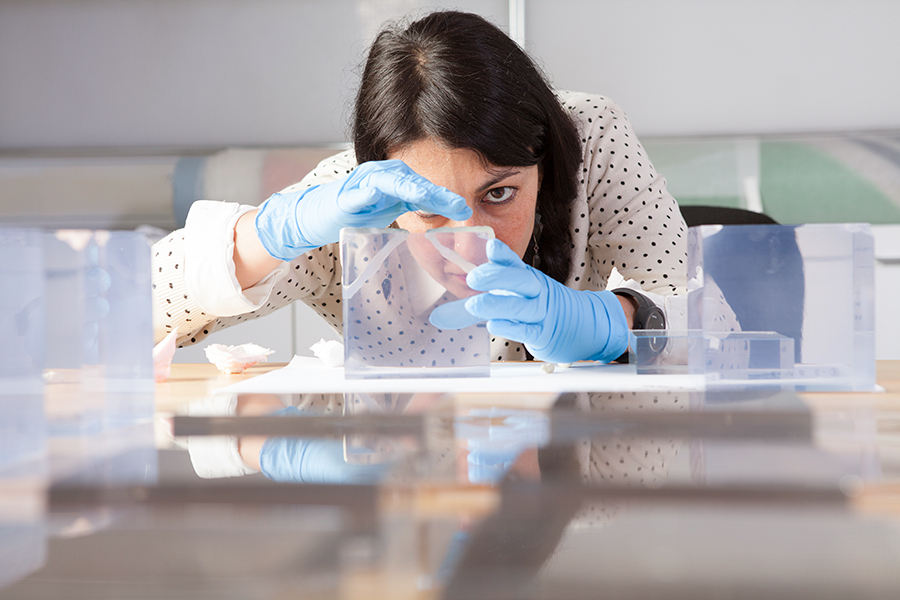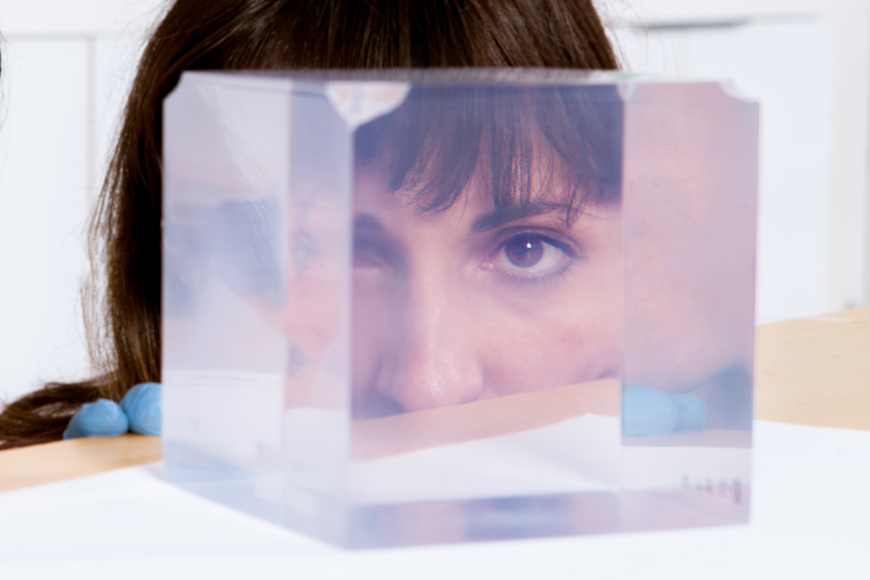Treatment Studies
Artworks made of polished plastic, such as polyester or acrylic plastic, are typically very challenging to preserve. Their surfaces are delicate and easily scratched, and maintaining the overall immaculate finish intended by the artist means the smallest damage requires attention. If the artwork breaks, or chips, an inconspicuous repair is very difficult to achieve as is finding a compatible adhesive. As a result, these works often undergo invasive treatments not proportionate with the extent of the damage—from extensive resanding to partial or total refabrication.
Part of Art in L.A. includes studying less invasive repair methods for polyester and acrylic works of art—specifically adhesives and fillers to repair cracks, chips, broken parts, and losses on these works, drawing on methods and materials commonly used for similar treatments on glass. The possibility of using various resins to re-saturate scratched areas without sanding or polishing is also being explored.
A number of mock-ups have been made from unsaturated polyester resin using compositions corresponding to those used by Los Angeles-based artists in the 1960s and 1970s—pigmented and unpigmented and with different pigment concentrations, as well as in different thicknesses, on which a variety of adhesives and repair methods are being tested.
The project team will also use case studies from the time period, including original fragments, rejects, and two complete but de-accessioned artworks.
Page updated: October 2013


